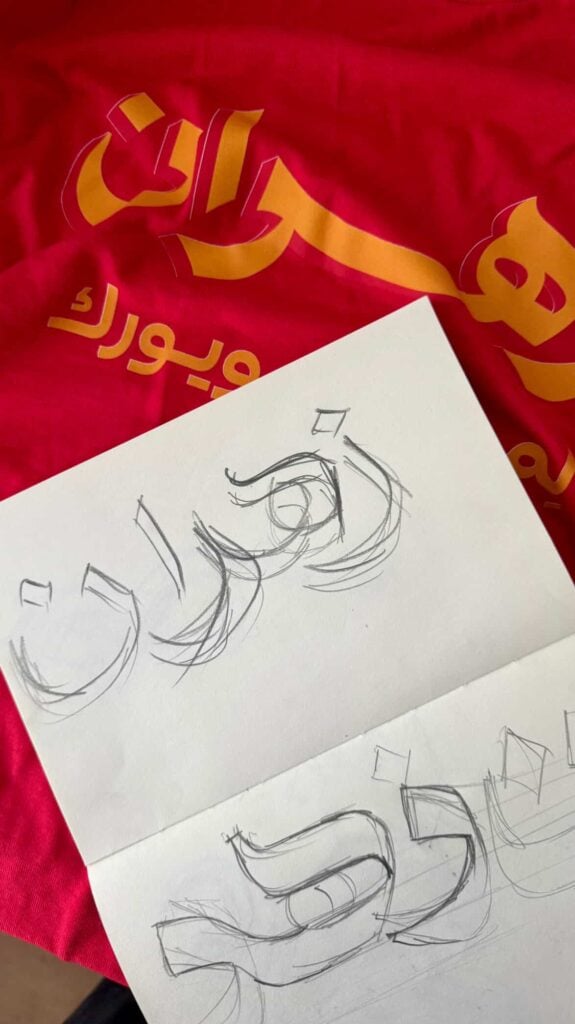News
That’s my mayor! (I live in [insert country here].)
People from all over the world suddenly want to move to New York, and that’s completely understandable. Everyone’s calling Zohran Mamdani their mayor, even people who’ve never set foot in the US. Mamdani’s campaign made people across continents feel seen and spoken to.
It’s startling when a politician feels human in an age of algorithmic coldness and utopian campaigns. But Mamdani’s warmth is structural and natural. His campaign reached out in multiple languages, showed up at community gatherings and gay bars, and broadcast a version of New York that finally looked like the people who actually live there. The movement was grassroots, hyperlocal, and turned global.
Zohran tapped many Arab creatives to be part of it and help shape the campaign’s visual and cultural fabric, bringing him closer to Arab New Yorkers and, by extension, to an entire diaspora watching from afar.
1. Wael Morcos
If you’ve seen the now-viral video of Zohran speaking nearly perfect Arabic (whoever coached him needs a raise), you’ve probably also noticed the Arabic typography closing the clip. The crisp lettering mirrors the campaign’s English logo but speaks directly to Arab viewers. That design was the work of Wael Morcos, a Lebanese graphic and type designer based in New York.
Morcos co-founded the design studio Morcos Key, known for its bilingual Arabic-Latin projects that explore how language and identity coexist. For Mamdani’s campaign, he adapted the original identity developed by Forge, a studio that drew from New York’s vernacular, from subway signs, bodega awnings, and gave it an Arab inflexion.

“It was kind of exciting to see that such a city of New York might one day have a mayor that looks like us, that relates to that part of the world that we come from,” Morcos tells ICON MENA. ” I was very excited to participate. Basically, nobody asked me to do anything, it was just an initiative that I felt like I had to do. A couple of days before the election, I was like now is the time if I want people to see it or for anyone to get a little bit more excited.”
“I finished it in a couple of days and I had a friend who knew a friend who is actually working on the campaign so I just sent it to her and the coincidence is that that same night I finished it, they were already working on the video that is now viral where he speaks Arabic and they were like ‘Well, that is perfect timing. Can we use it?’ I said ‘Yes, of course you can use it. That’s why I made it!”
2. Sarah elawad
British-Sudanese designer Sarah Elawad brought her distinctive visual language, somewhere between digital nostalgia and global-south kitsch, into the campaign’s universe. Her work revels in beauty, love, and connection, often using the visual slang of everyday digital life: WhatsApp stickers, glitchy textures, DIY sincerity.
So when her animation of Zohran’s face blooming out of a flower against a floating mountain range appeared online to encourage early voting, it felt like a visual language we all recognise (and secretly admire) from all the overly-stimulating “good morning” videos our mothers and grandmothers share on the WhatsApp family groups.
3. Ramy Youssef
When Saturday Night Live spoofed the New York mayoral debates, Ramy Youssef played Mamdani. He appeared as a pitch-perfect facsimile: the gold rings glinting, the red-orange bracelet dangling from his wrist, and that unmistakable earnest grin fixed in place. Mamdani, to his credit, took it in stride. He reposted the clip with an open smile, praising the all the details Ramy nailed.
4. Kareem Rahma
No one has captured New York’s cultural noise quite like Kareem Rahma, and his collaborations with Mamdani turned into a recurring crossover event. On his Subway Take series, Rahma called Eric Adams “a terrible mayor” and declared, months before the election, that he “should be mayor.” By the time Mamdani appeared on Keep the Meter Running, Rahma’s hit show that turns cab rides into confessional spaces, the two had cemented themselves as a dynamic duo of the new New York.
5. Felukah
Political rallies are defined by their music. Hillary had “Fight Song,” Trump had “Y.M.C.A.”, and Mamdani had Felukah. The Egyptian artist’s track “Hayati,” produced with DJ Habibeat, played as he took the stage during his victory speech. When he turned to thank his wife, Rama Duwaji, calling her “Hayati” (my life). Arab ghazal just hits different, even when you’re the mayor of NYC.
6. Zeid Hijazi
For her first public appearance as New York’s first Syrian First Lady, Rama Duwaji chose a sleeveless black laser-cut denim top by Zeid Hijazi, the Palestinian-Jordanian designer based in London. The piece, titled Frequency, merges traditional Palestinian tatreez embroidery with futuristic tailoring, a quiet collision of heritage and rebellion that defines Hijazi’s work. As he previously told ICON MENA, his designs are “thought-provoking storytelling about the mysteries of a futuristic yet dystopian Middle East, while incorporating Middle Eastern craftsmanship with couture elements.”

7. Aya Tariq
The final hand in Rama’s look belonged to Moroccan-Saudi makeup artist Aya Tariq, who shared on her story: “Last night was one of the most fulfilling nights of my life. I’m so grateful to share my craft with people I truly align with.”